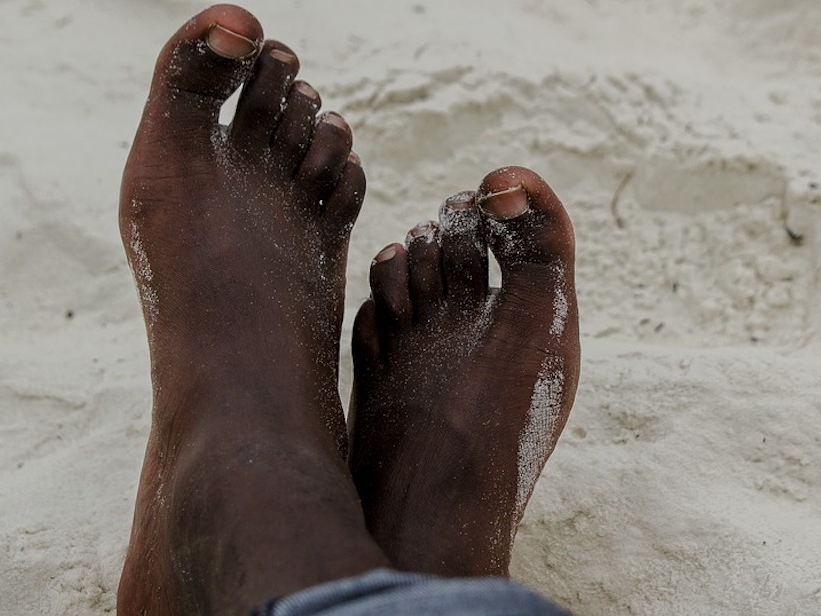- Across the animal kingdom, feet come in an astonishing variety of shapes and sizes.
- Different types of feet are specialized to do different kinds of things.
- Geckos feet are actually sticky allowing them to stick to surfaces while elephants can actually “hear” with their feet.
- Here’s the science behind 10 animal feet.
Feet don’t just carry us from point A to point B – they dictate the style in which we travel. Some species move quietly, other animals can reach surprising speeds, and other creatures’ movement patterns still baffle scientists.
Here’s the weird science behind different animals’ feet.
Elephants “hear” with their feet.

Instructor at Stanford University Medical School, scientific consultant, author, co-founder and CEO of Utopia Scientific, and an expert on elephants, Caitlin O’Connell-Rodwell’s pioneering research in Namibia has revealed that elephants use their feet to communicate.
Elephants emit low-frequency sounds using their large vocal cords that can travel dozens of miles through the air and under the ground. Distant elephants then can “hear” by interpreting the sound waves using sensitive nerve endings in their giant feet. Elephants can tell the difference between nearby and distant dangers and can communicate information such as “alarm cries, mating calls, and navigation instructions to the herd,” according to what O’Connell-Rodwell told KQED.
"When an elephant vocalizes, it's like a mini-explosion at the source," O'Connell-Rodwell said to KQED.
Ostriches are the only birds with two toes.

The largest bird in the world is also the only bird in the world that has two toes, not three or four. According to the Safari Ostrich Farm in South Africa, most birds have four toes in order to grab their prey. Most flightless birds, like the emu and penguin, have just three toes. The ostrich, meanwhile, has one large toe to carry the weight of its body, which can reach up to 400 pounds, and another for balance. Their unique feet and tall legs allow ostriches to reach speeds of up to 40 miles per hour, according to the American Ostrich Association.
Ostriches also fight with their feet. They can only kick forward, but Science News suggests that their legs are strong enough to disembowel a human being. The birds have been known to kill if feeling threatened.
Dr. Nina Schaller, an expert on the ostrich locomotor system, wrote for the European journal, Science in School, that the majority of the ostrich's "leg musculature [is] located very high on the thigh bone and hip, whereas the lower swinging elements of its leg are comparatively light, moved by long, mass-reducing tendons. This arrangement optimizes the ostrich leg for high-velocity locomotion, giving it both a long step length and a high step frequency."
Schaller also wrote that the ostrich's unique build could inform human prosthetics.
Mammals in the equine family are the only one-toed animals still in existence.

The ancestors of animals in the Equus genus (i.e. horses, donkeys, and zebras) had four toes on their front feet and three on the back. But as horses shifted from "forest to grassland environments," the animals evolved to have just one toe, according to The Guardian.
In a 2017 study, scientists at Harvard University found that as the horse's body mass increased over time, "the central toe became larger and more robust, allowing it to withstand greater bending forces and expend less energy as they walked."
The length of horses' legs also evolved to be longer, allowing them to travel greater distances to seek resources.
Brianna McHorse, the lead author of that study, told The Guardian, "it is very energetically expensive to have a bunch of toes on the end of that leg. If you get rid of them then it costs less, energetically speaking, to swing that leg for every step."
Geckos can control the stickiness of their feet.

These little lizards can stick to surfaces thanks hundreds of tiny, flexible hairs on their toes called setae, which split into even tinier hairs called spatulae.
"A gecko by definition is not sticky - he has to do something to make himself sticky," Alex Greaney, a professor of engineering at Oregon State University in Corvallis, told Live Science.
The setae don't stand straight up at a 90-degree angle; Greaney's study revealed that the hairs bend more horizontally, so that, as Kelly Dickerson wrote in Live Science, "the surface area that the geckos can stick to increases, and the geckos can support more weight."
Human feet are great for running long distances.

Tired of stubbing his toes, Atlas Obscura writer Dan Nosowitz asked Dr. Terry Philbin, an orthopedic surgeon, why we have them.
"As you go from the back of your heel to the front of your toes, each segment of the foot becomes more adaptable and less rigid," Philbin told him.
We walk with a heel-first gait, so the heel absorbs the shock, then the toes help push you off for the next step.
The human foot is quite different from that of the chimpanzee, according to Scientific American: "A major difference between the two stems from flexibility. The former's foot is adapted for a stiff push-off which is necessary for bipedal locomotion. The latter's feet maintain greater flexibility overall and grasping abilities that enable climbing trees as well quadrupedalism on the ground."
Short, thick toes are ideal for bipedal walking and running.
Mosquitoes have scaled feet to help them land on water to lay eggs.

According to Steve Gschmeissner, the photographer of a photo of a mosquito's foot that won entry into the Royal Photographic Society's International Images for Science contest in 2017, the scales that cover most of a mosquito's body are especially dense on the leg. He told Live Science that these scales "help protect the limb and enable the mosquito to land on water, where these insects lay their eggs."
The mountain goat can scale near-vertical cliffs thanks to its cloven hooves.

Mountain goats have cloven hooves with two spread-out toes that help with balance. Rough pads on the bottom of each toe "provide the grip of a natural climbing shoe," according to National Geographic.
Mountain goats' hooves are unique in the world of cloven hooves, wildlife researcher Stefan Pociask told Forbes. "In design … these animals share a trait with a medieval knight's foot armor - no bottoms to them. [The armor pieces] are strapped in place over the top of the knight's shoes. What results is a hard covering on top, a soft bottom, and surrounding the soft sole, a hard edge that touches the ground...This is what allows them to be rock climbers."
Pociask also explained to Forbes that when a goat places one of its hooves down, "the pad makes first contact over a larger area, and through the sense of touch, this gives the mountain goat more information as to what he is about to step on, and more opportunity to adjust as needed."
The large surface area and the sensory feedback allow the goat to adjust to its rocky environment.
Cats' paws are complex.

Cats are digitigrade walkers, meaning they walk on the balls of their feet. The small, soft, and sensitive pads on their paws help cats assess their environments and move silently, allowing them to hunt.
Cats are known for landing on their feet after big jumps, but it took nearly all of their evolutionary history to achieve that feat. Cats lack a collarbone, have six more vertebrae than humans do, and are equipped with a strong inner-ear compass that helps them reorient themselves. All these features help the animals correct their positions mid-fall.
According Mother Nature Network, kittens start learning to fall and perfecting their "righting reflex" at about seven weeks. With a strong arch in the back, front feet positioned close to the face for protection, and back legs taking on their body weight, cats can stick a perfect landing.
Crocodiles' webbed feet take them from sea to land.

Crocodiles' two back feet are larger and more webbed than the front ones, but it's their enormous powerful tail that helps propel them through the water to swim. The creatures can move through water at up to 20 miles per hour, according to the San Diego Zoo. They also store extra fat in their tails in case of a period of food scarcity.
But these ancient-looking reptiles don't just use their webbed feet for swimming. When the creatures go on land to hunt, their feet allow them to move at a rate of 11 miles per hour for very short distances.
Flying lemurs have toes that act like suction cups.

The flying lemur can't fly and isn't a lemur. It's actually defined as a colugo and found predominantly in the forests of Southeast Asia, gliding from tree to tree.
Its patagium - the fold of skin between its limbs - helps the animal glide through the air for more than 20 feet at a time. But the flying lemur also gets help from its webbed feet. To grip tree trunks, it has sharp claws and the ability to form suction cups with the soles of its feet.

